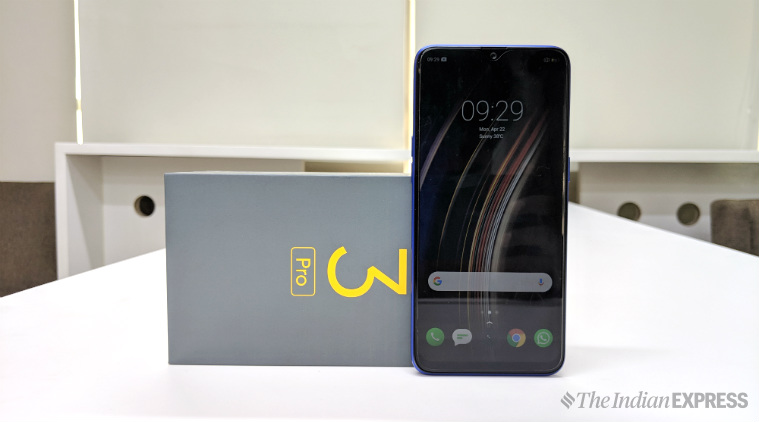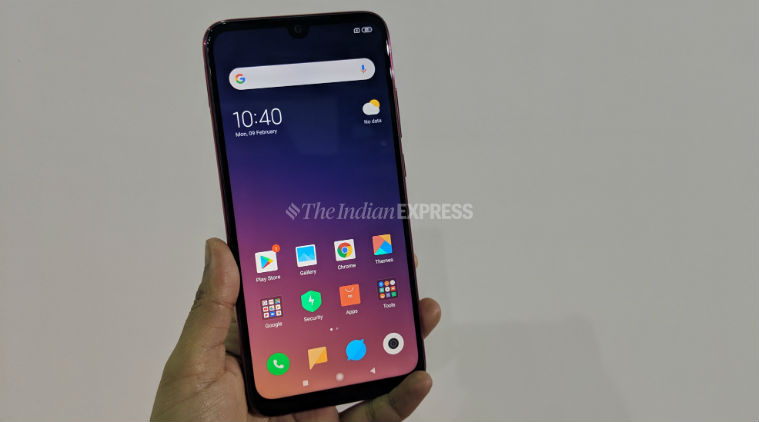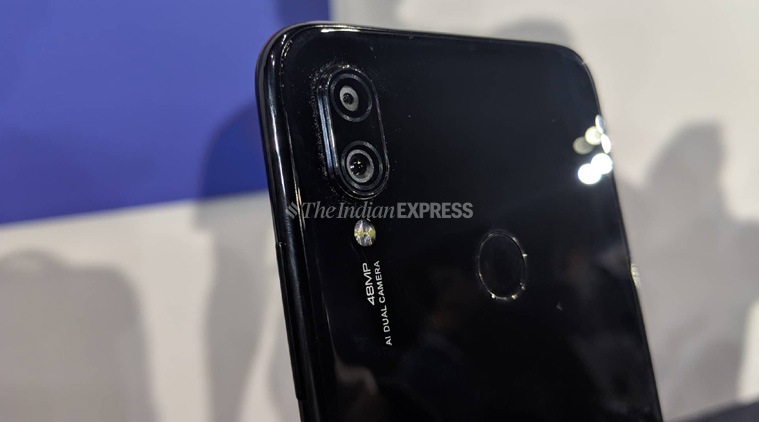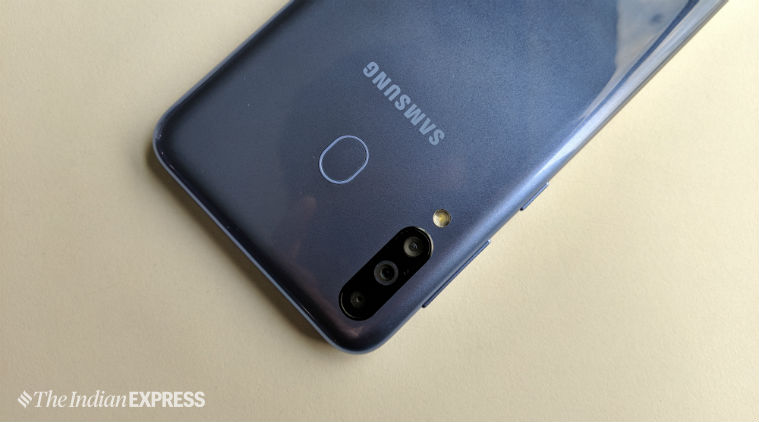
Realme 3 Pro with dual rear cameras, fast charging, and Snapdragon 710 processor has been launched in India. The phone competes with Xiaomi Redmi Note 7 Pro, which comes with a 48MP rear camera, Qualcomm Quick Charge 4, and Snapdragon 675. Realme 3 Pro also rivals Samsung’s Galaxy M30, which sports triple camera system at the back.
The mid-range smartphones are priced starting at Rs 13,999. Another common feature among the devices is that they pack big batteries. Realme 3 Pro has a 4,045mAh battery, while Redmi Note 7 Pro and Galaxy M30 are backed by 4,000mAh and 5,000mAh battery respectively. So, how do Realme 3 Pro, Xiaomi Redmi Note 7 Pro, and Samsung Galaxy M30 fare in terms of price and specifications? We find out.
Watch: Realme 3 Pro first look
Realme 3 Pro vs Xiaomi Redmi Note 7 Pro vs Samsung Galaxy M30: Price, availability
Both the Realme 3 Pro and Redmi Note 7 Pro have similar pricing – Rs 13,999 for the base 4GB RAM + 64GB storage version and Rs 16,999 for 6GB RAM + 128GB storage option. Realme made it clear that they are pitching this phone as a rival for the Redmi Note 7 Pro. Realme 3 Pro will be available via Flipkart and Realme’s site from 12 noon on April 29. Redmi Note 7 Pro is Flipkart exclusive as well and it can also be purchased from the company’s website as well as it Mi Home stores.
Also read: Realme 3 Pro review: Impressive performance, good camera
Samsung Galaxy M30 is priced slightly higher at Rs 14,990 for 4GB RAM + 64GB storage variant and Rs 17,990 for 6GB RAM +128GB storage model. It will be available via Amazon and Samsung’s own website. In terms of pricing, the Realme 3 Pro and Redmi Note 7 Pro compete very closely, while the Galaxy M30 has a higher price for similar storage models.

Realme 3 Pro vs Xiaomi Redmi Note 7 Pro vs Samsung Galaxy M30: Design and display
Realme 3 Pro gets a 6.3-inch FHD+ display, similar to its rivals Redmi Note 7 Pro and Galaxy M30. The three phones have 19.5:9 aspect ratio. Realme 3 Pro sports a dewdrop notch on top, while Redmi Note 7 Pro has a waterdrop-sty;e notch. Samsung Galaxy M30 features a U-shaped notch on top, and the company likes to call this display as Infinity-U display.

In terms of design, the Redmi Note 7 Pro has a more premium glass back design with a holographic look at the back, which the company calls Aura design. The Realme 3 Pro has a plastic body with a similar glass like finish. The design aspect stands out on the two phones, making the devices look premium, but Redmi Note 7 Pro with its glass back has the edge. The Galaxy M30 has a plastic back cover as well, though it does not come with stylish design sported by these two phones.
Xiaomi Redmi Note 7 Pro has P2i coating for splash resistant, which is good to see on the mid-range phone. Realme 3 Pro also claims to be splash and dust resistant. The Galaxy M30 does not have this feature.
Read more: Redmi Note 7 Pro review: At Rs 13,999, this one is a clear winner
Realme 3 Pro colour options include – gray, gradient blue and gradient purple. The Redmi Note 7 Pro can be bought in blue, black, and red colour variants. The colour options for Samsung Galaxy M30 are gradiation blue and black.
Realme 3 Pro vs Xiaomi Redmi Note 7 Pro vs Samsung Galaxy M30: Camera
Realme 3 Pro features a dual rear camera setup, a combination of 16MP Sony IMX519 sensor with f/1.7 aperture and a secondary 5MP sensor with f/2.4 aperture. The rear camera setup also has a Night mode, along with an Ultra HD mode to shoot photos at 64MP resolution. However, in our review, we observed, the 64MP photos lacked details, while 16MP images were crisper.

More features of the camera include Nightscape mode for low light photography, Chroma Boost mode, and 960fps Super Slo-mo feature. The front camera is 25MP (f/2.0) with AI beauty feature, which clicks good photos in outdoor lighting, but struggles under low light situations.

The 48MP (Sony IMX586 sensor)+5MP dual rear camera system is the highlight of Xiaomi Redmi Note 7 Pro as the picture quality is excellent. The details in some photos were pretty good, which one will not experience on most budget phones. The selfie camera is 13MP.
Samsung Galaxy M30 has a triple rear camera setup – 13MP primary sensor f/1.9 aperture + 5MP depth sensor with f/2.2 aperture + 5MP ultra-wide angle sensor with f/2.2 aperture. The camera clicks good outdoor shots in daylight, but it struggles in low light conditions.

The 16MP front camera on the device takes good photos, the low-light photos are not as good. Overall, in the camera department, Redmi Note 7 Pro looks like a better phone to consider, while Realme 3 Pro gives it a close competition.
Realme 3 Pro vs Xiaomi Redmi Note 7 Pro vs Samsung Galaxy M30: Processor and battery
Realme 3 Pro uses a Snapdragon 710 processor and during our usage, we did not face shutters of lag with multiple tabs and more than 15 Google Chrome tabs open. There were no noticeable frame drops while playing Asphalt 9 and PUBG Mobile, but the phone does become warm during gameplay.

The 4,045mAh battery is a plus as it lasts two days with moderate usage. With 20W VOOC 3.0 fast charge, the phone charges from five to 98 per cent in just one hour and 10 minutes, which is great.
Xiaomi Redmi Note 7 Pro is powered by a Snapdragon 675 processor, which we found to be quick and responsive to most tasks. It can easily handle more than 15 tabs on Chrome without any lag. Graphics-intensive games like Asphalt 9 was smooth without any stutter or noticeable frame drop.
Watch: Redmi Note 7 Pro review: At Rs 13,999 is this the best camera phone?
The 4000 mAh battery will easily last around a day and a half. During our review period, even with only 50 per cent charge, the phone would still have battery left for the next day with moderate usage. Redmi Note 7 Pro comes with support for QC 4.0, but the charger needs to be bought separately.
Also read: Samsung Galaxy M30 review: Attractive build and long battery life, but is it enough?
Samsung Galaxy M30 packs the company’s own Exynos 7904 processor that can handle day to day tasks easily. PUBG and Asphalt 9 run well on medium settings at default. Coming to the battery, 5,000mAh battery lasts more than two days with moderate usage. However, it takes quite long, around two hours, to get fully charged from zero per cent.
Realme 3 Pro vs Xiaomi Redmi Note 7 Pro vs Samsung Galaxy M30: Software
Realme 3 Pro runs Android 9 Pie with ColorOS 6.0 skin. The latest Android OS is good to see on a mid-range phone, though the ColorOS still feels slow and cluttered. For authentication, it supports a rear-mounted fingerprint sensor as well as face unlock, both of which are fast and accurate.

Xiaomi Redmi Note 7 Pro also runs Android Pie, but with Xiaomi’s MIUI 10 skin. We observed in our review that MIUI continue to show ads, especially from the Mi App Store, which keeps pushing apps to install, which is annoying. Redmi Note 7 Pro also has a physical fingerprint sensor at the back and the phone also supports face unlock.
Samsung Galaxy M30 runs on older Android 8.1 Oreo, which is disappointing to see since rivals offer a newer OS. There is also the company’s Experience UI 9.5 on top and the custom skin is clean, which we liked. The fingerprint sensor on the Samsung Galaxy M30 works accurately, while the face unlock feature could be faster.